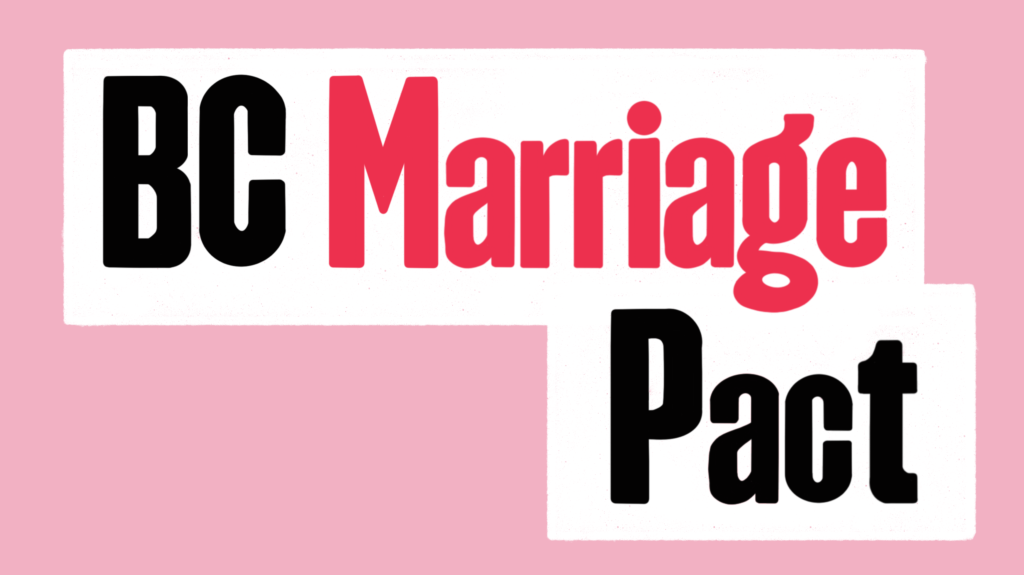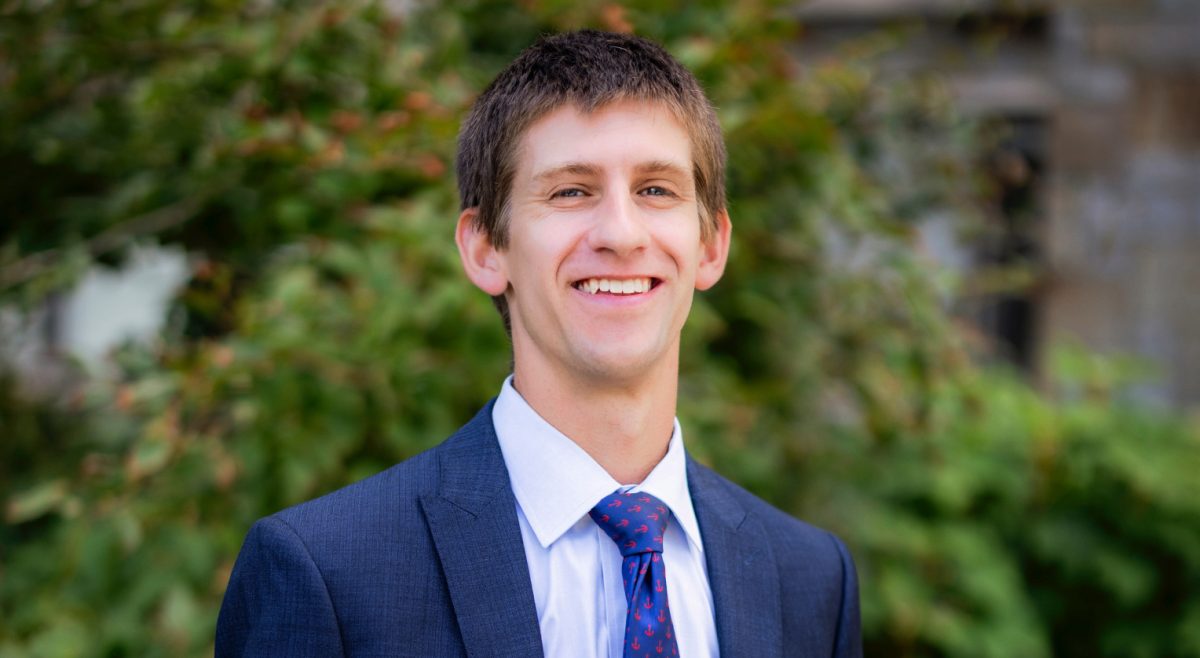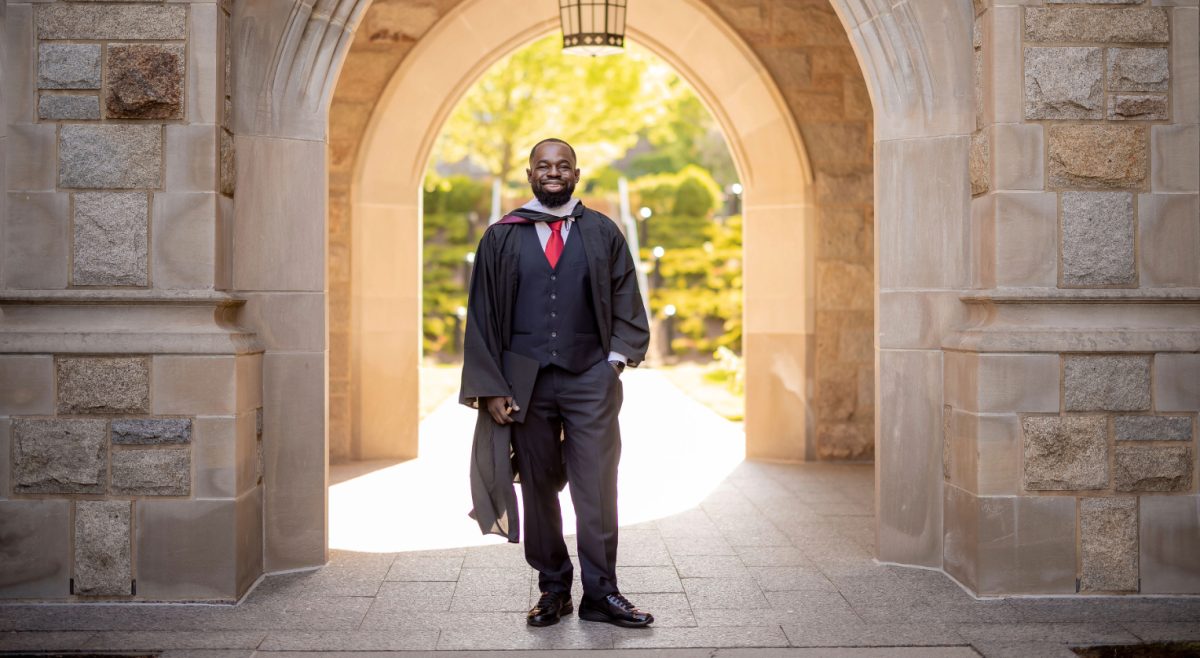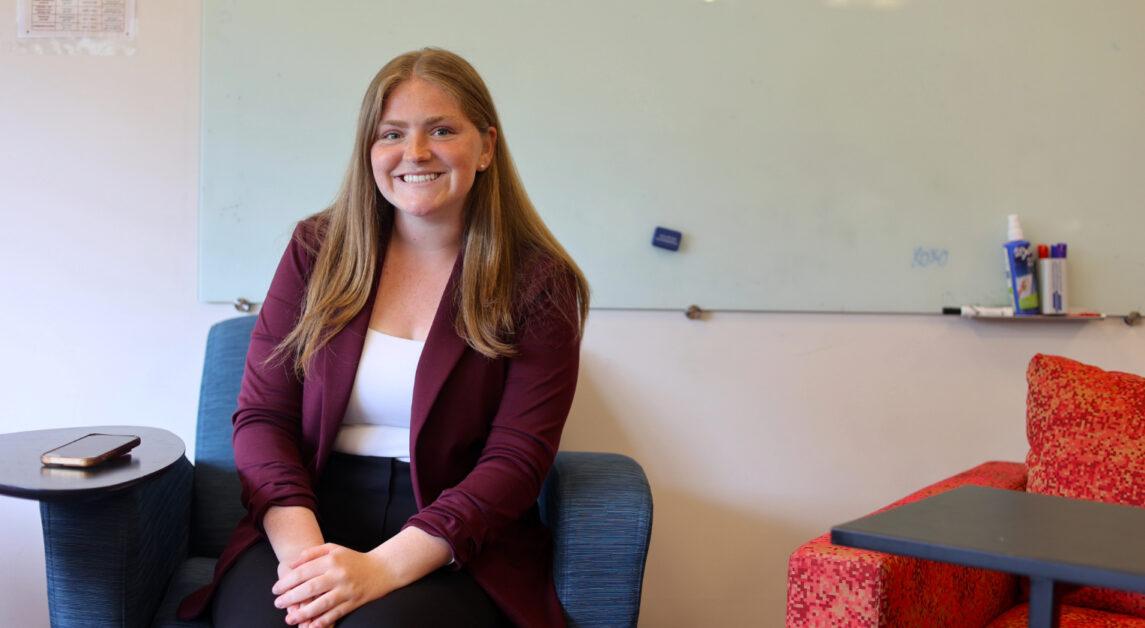Valentine’s Day can be a stressful time on the Heights. With over 7,000 Boston College alumni marriages, many students are on the lookout for their perfect match.
This year, though, a wave of lighthearted optimism seemed to accompany the typical Valentine’s Day anxiety. Niche pick-up lines and oddly personal questions, aimed at setting people up in time for the holiday, flooded student’s Instagram feeds, Gmail inboxes, and residence halls.
Though Feb. 14 has come and gone, more Eagles may have found their matches this year, thanks to the BC Marriage Pact.
Started in 2017 by former Stanford University undergraduates Sophia Sterling-Angus and Liam McGregor, the Marriage Pact compiles academic theory, computer science, psychology, and market design into one 10-minute questionnaire designed to find participants’ best match on their respective campus, according to the Marriage Pact website. What began as a project for Stanford’s Econ 136: Market Design is now taking universities across the United States by storm.
Its newest addition? BC.
“The Marriage Pact is a survey that will find your perfect match within the BC pool,” Caitlyn Yee, founding member of the BC Marriage Pact and MCAS ’23, said. “It’s backed in so much research and science, and it’s very credible in terms of the match that you’ll be getting.”
When Yee’s high school friend asked her to bring the Marriage Pact to BC in November 2020, she gladly obliged, she said. Two of Yee’s hometown friends were part of the original Stanford Marriage Pact team in San Jose, Calif. Yee worked directly with the team from Stanford to implement the Marriage Pact on the Heights, she said.
A sophomore studying computer science and mathematics, Yee utilized her own skills to work on the algorithm behind the Marriage Pact.
“We found a few bugs,” Yee said. “A few people would get a link to the Santa Clara or NYU Marriage Pact, so I went through the code to fix that.”
When Yee decided to bring the Marriage Pact to BC, she agreed to do so alongside her friend Jack Smith, MCAS ’23.
“Jack is one of my closest friends, and I knew he’d absolutely jump on this opportunity,” Yee said. “He’s very involved on campus, and I knew he’d put a lot of time and effort into the BC Marriage Pact, so he was the first person that I asked to be part of the team with me.”
Smith, a sophomore studying economics, marketing, and philosophy, was hooked from his very first meeting with the Stanford Marriage Pact team, he said.
“I picked up my marketing minor back in December, so this was my first real experience with publicity and social media marketing,” Smith said. “It was incredibly fulfilling.”
Yee and Smith soon joined forces with Baris Tezel, MCAS ’23; Anissa Zhang, CSOM ’24; and Jacob Friedland, MCAS ’24, student volunteers who learned about the Marriage Pact through Facebook.
“I wanted to get involved on campus and wanted to learn more about marketing,” Friedland said. “I really liked the idea behind the Marriage Pact, and thought it would be a great time to implement it. With COVID-19, it’s definitely been harder for people to meet each other naturally.”
The actual Marriage Pact survey consists of approximately 50 questions, hand-picked by Yee and her team out of 300 possible questions.
“There’s a baseline set of questions for every school, but each of us had to pick our top 10 questions, and then we narrowed those down,” Yee said. “We had to pick the questions that we thought would best appeal to BC as a whole.”
The survey covers a wide range of subjects beyond the baseline demographic questions. From drinking habits and eating choices to existential angst and being left at the altar, the Marriage Pact strives to connect students that wouldn’t have otherwise noticed their compatibility. Participants then had to rank each question on a scale from one to seven, one being “strongly disagree” and seven being “strongly agree.”
“All of my friends were saying they were afraid they’d get a weird match,” Yee said. “But if you get a weird match, it’s because you’re weird too. The program looks for compatibility, and what are the odds that you get someone that you’re compatible with on a baseline level, but are also attracted to?”
The BC Marriage Pact team was entirely responsible for publicizing the survey on campus, from distributing fliers and designing Instagram posts to banging on doors to pique student interest.
“The most energizing, yet also exhausting thing that I did while marketing the Marriage Pact on campus was canvassing,” Smith said. “I wore three masks and went through all of Walsh Hall and 2150, distributing fliers to residents and trying to answer any questions.”
While a literal marriage pact seemed an unlikely outcome for most participants, several memorable stories did come of the first BC Marriage Pact, which closed on Feb. 8. Gianna Laura, MCAS ’23, was paired with a student from her freshman orientation group.
“I met him at orientation, and when I got my BC Marriage Pact match, I didn’t think anything would come of it,” Laura said. “But he reached out to me, and actually, I guess the algorithm is pretty good.”
Laura met her match for lunch on Lower Campus, she said.
“We were very compatible and ended up talking for three hours. Even though I don’t think anything romantic will come of it, it was really fun.”
And that was exactly the point, according to Yee and Smith.
“We marketed it as something that leads towards marriage, but I honestly just think it’s something to help people come closer together here at BC,” Smith said. “No matter your relationship status or sexuality, you’ll match with someone you’ll probably like.”
The first BC Marriage Pact did face one glaring issue, however—a lack of straight, male participants. Despite repeated emails urging these students to complete the survey, about 600 straight women were left without a match this year.
“Our goal for next year is certainly to better appeal to straight men at BC,” Smith said. “They were the weakest link for the Marriage Pact, and it broke my heart to see so many women not receive matches.”
But that didn’t stop the BC Marriage Pact team. While the last 600 straight female participants to submit the survey may have not received a male match, they did receive a “friend match”—the most compatible straight woman from the pool of those left without a match.
Sara Moyers, CSON ’23, was paired with her friend living a few doors down in Walsh Hall.
“I was looking forward to seeing who my match was, and when I realized I got a friendship match, I was a bit disappointed,” Moyers said. “But I guess the algorithm does work, because I got paired with someone I’m already friends with.”
In the end, 3,708 Eagles participated in the BC Marriage Pact this year—approximately 38.2 percent of the undergraduate student body, Smith said. Yee and Smith hope that the Marriage Pact will become a tradition on the Heights, even after they graduate.
“There’s a couple that met through the Stanford Marriage Pact that got engaged last year,” Yee said. “So who knows, maybe we’ll get an engagement down the road.”
Featured Graphic by Olivia Charbonneau / Heights Editor
Graphics Courtesy of the BC Marriage Pact










